Green Chemistry Applications and Achievements

The focus of promoting green chemistry at Everlight Chemical
Improve Atom Efficiency
Reduce Waste, Pollution and Emissions from Production Processes
Recycle and Reuse Waste
Case Study 1: Improved Production Process of Reactive Dyes
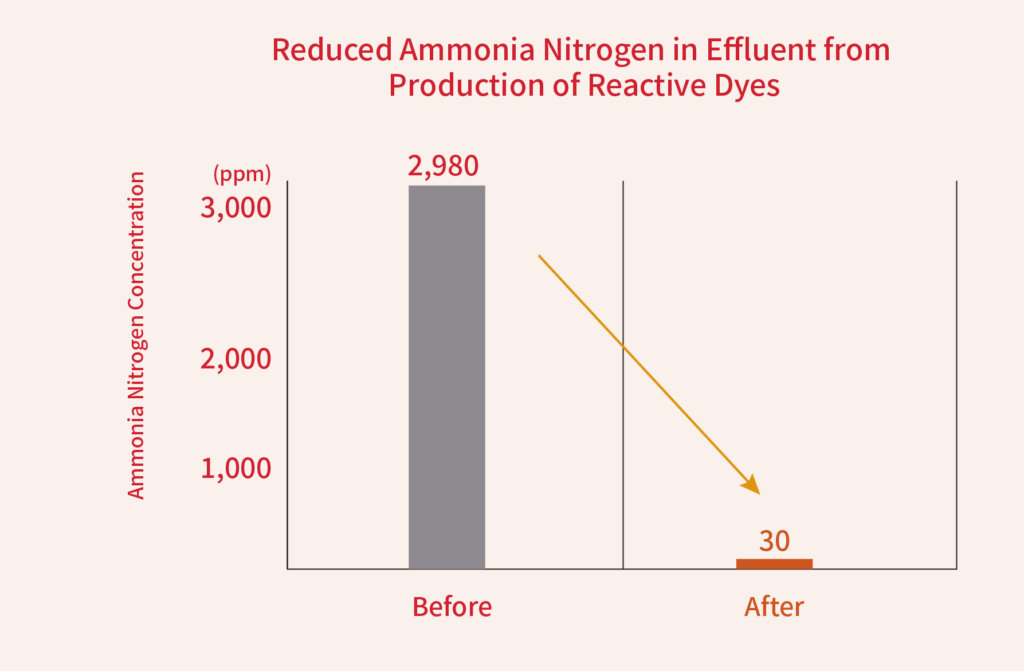
Case Study 2: Reducing Hardness of Wastewater and Sludge Volume
Case Study 3: Developing Digital Textile Printing Inks that Embody Green Chemistry Principles
Case Study 4: Implementing Advanced Ozone Catalytic Oxidation (OZCO) System
Case Study 5: Process Improvement to Improve Atom Efficiency
These improvements enabled a reduction of raw material inputs by 69.3 tons in 2022, saving NT$189,000 in raw material costs and reducing carbon emissions by 0.51 tons.
- Condensate water is directly discharged into the drain, emitting smoke and lacking proper 5S practices.
- As condensate water is clean, it is wasted if not recycled
- We set up two catch basins on both sides of the vacuum dryers.
- We also installed piping to direct condensate water to the catch basins for recovery and reuse in the hard water system.

Case Study 7: Recycling and Reuse of Filter Media for Liquid Products
- The filtration process for liquid products utilizes 1um/5um filter cartridges that are disposed of after use
- Approximately three 1um/5um filter cartridges are used per batch of product, resulting in waste generation.
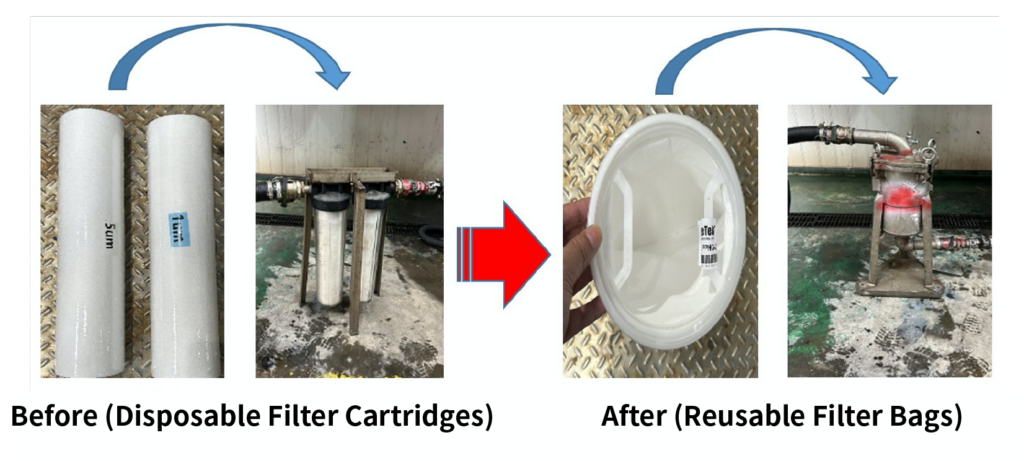
Case Study 8: Boiler Efficiency Enhancement
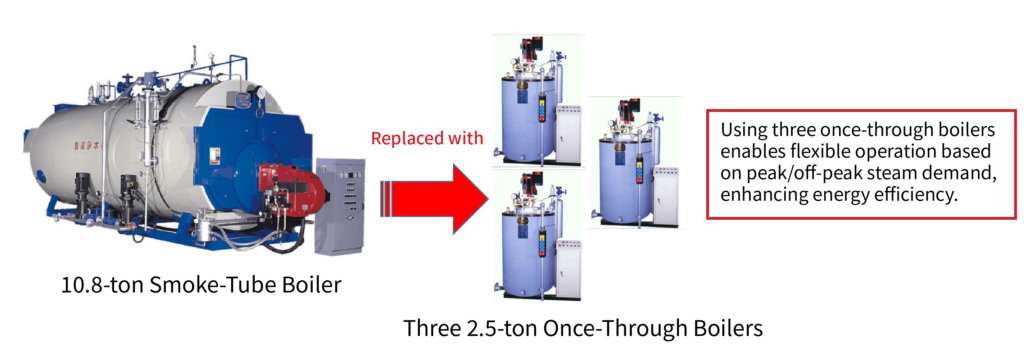
Case Study 9: Continuous Improvement in Ink Products
(2) Adjusted the mole ratio in related reactions to reduce consumption of ammonia solution and salts.
(3) In 2022, the atom efficiency reached 73.4%, representing a 7.9% improvement compared to 2021 and a reduction of 2,819 tons of raw material input.
(2) By installing mixing equipment (blending tar waste with recovered solvents), we convert the tar waste into 12 tons of fuel per year, which can produce 60 tons of steam annually.
(3) Financial benefits: saving NT$180,000 on steam procurement each year, and saving NT$300,000 on outsourced waste transportation costs per year.

Case Study 11: Sale of Methanol Recovered from SV Production Line
(2) By commercializing the recovered methanol, excess amounts recovered can be sold externally, generating an annual income of NT$800,000.
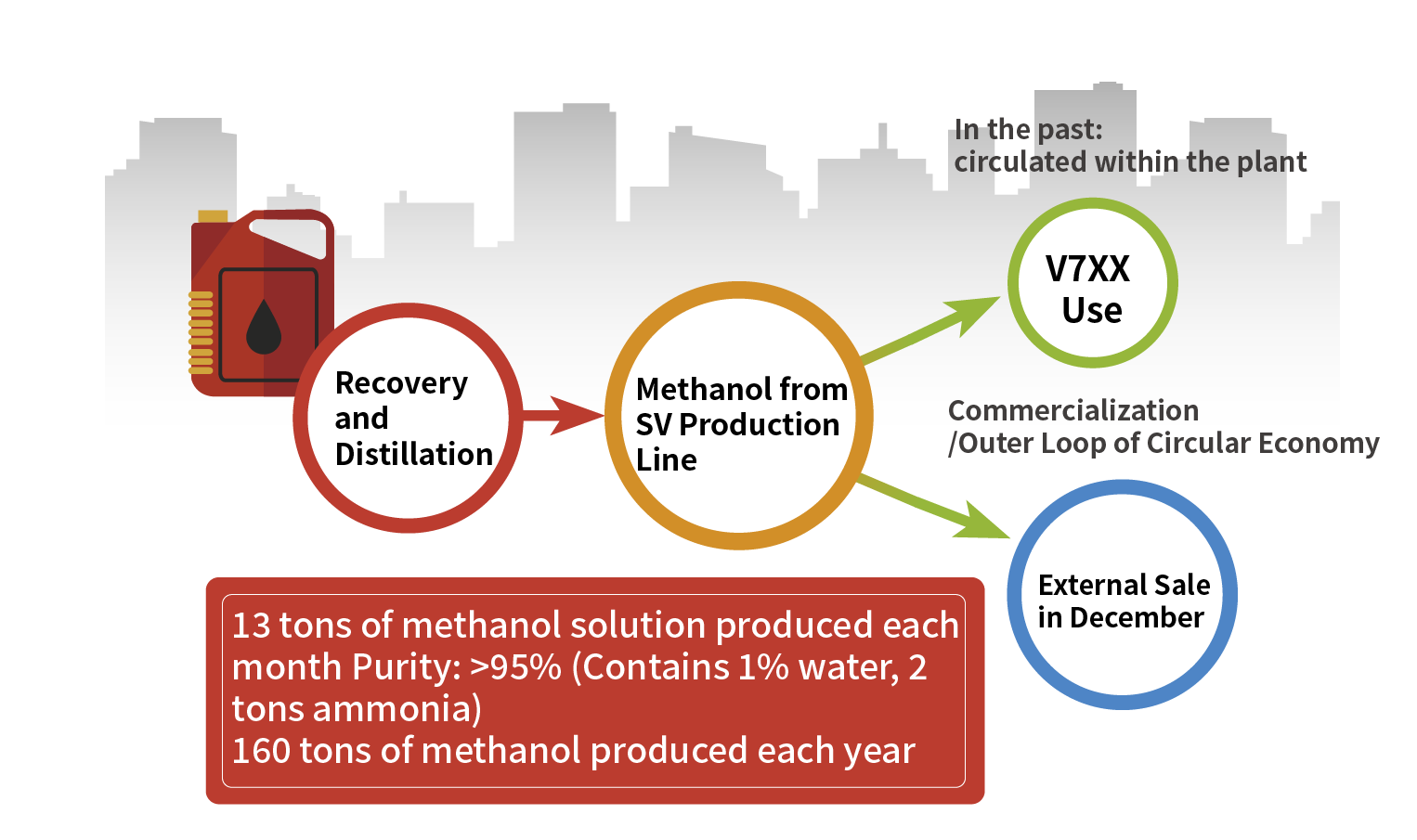
(2) Financial benefits: savings on raw material packaging costs (approximately 3,250 steel drums per year, equivalent to NT$2.9 million in total cost) as well as transportation and disposal fees of used steel drums.
Case Study 13: Repairing and Reusing Wooden Pallets
Case 14: Recycling and Reusing Empty Steel Drums
Before: Problem Encountered
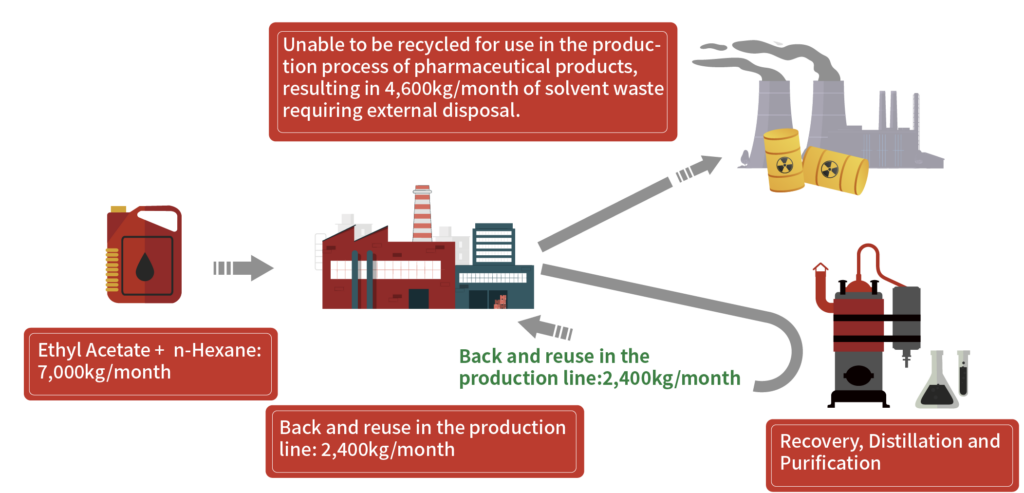
After
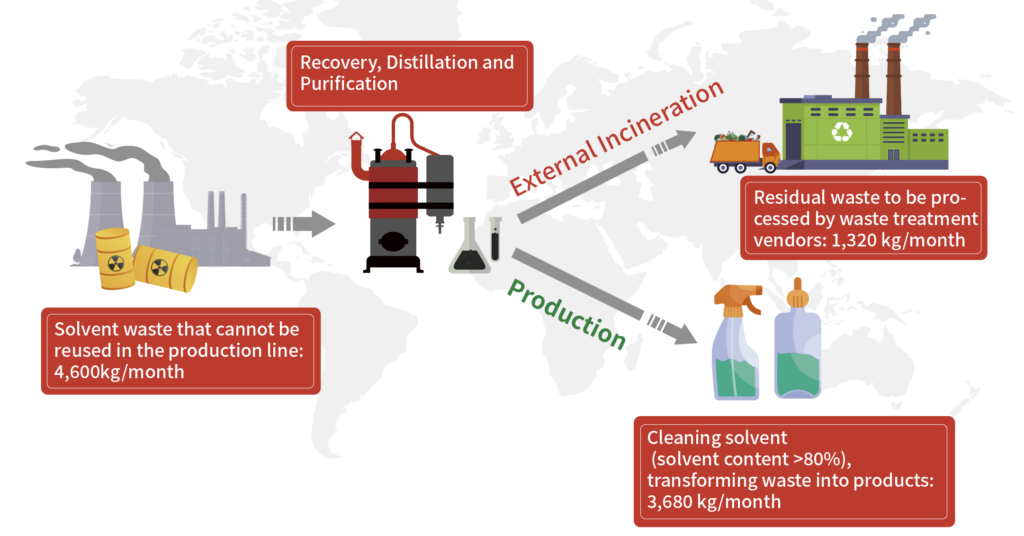
Benefit

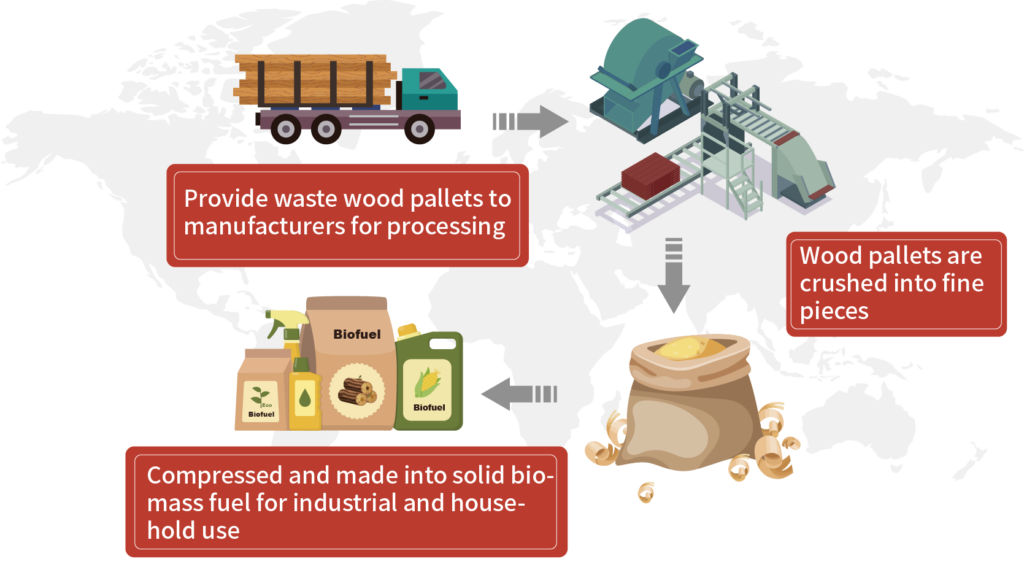

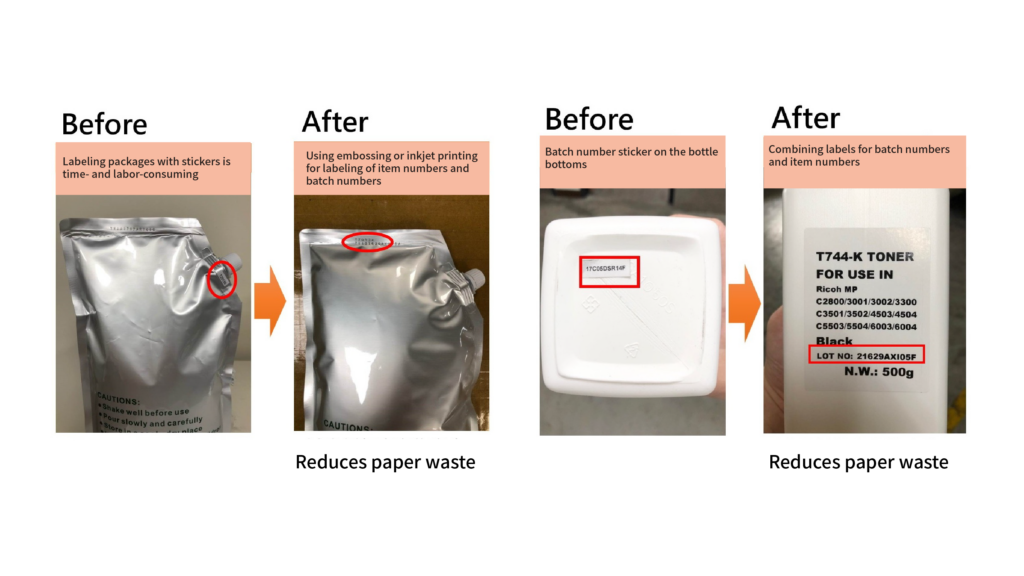
No Data Found

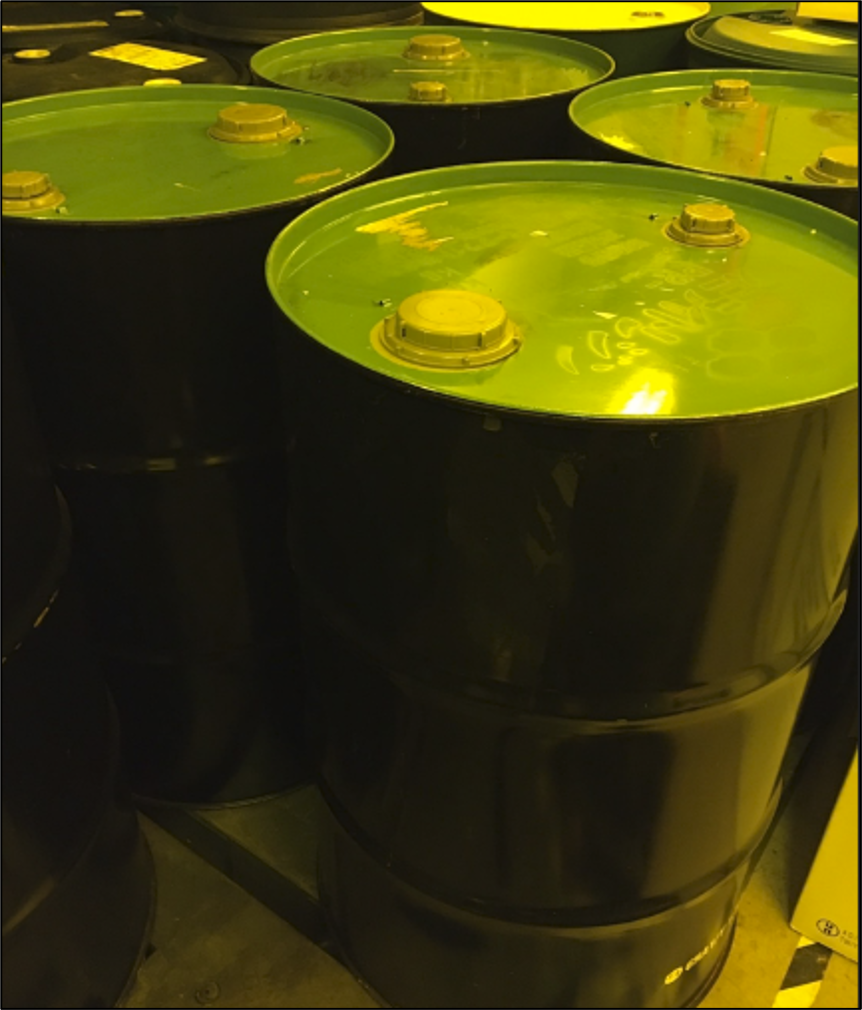
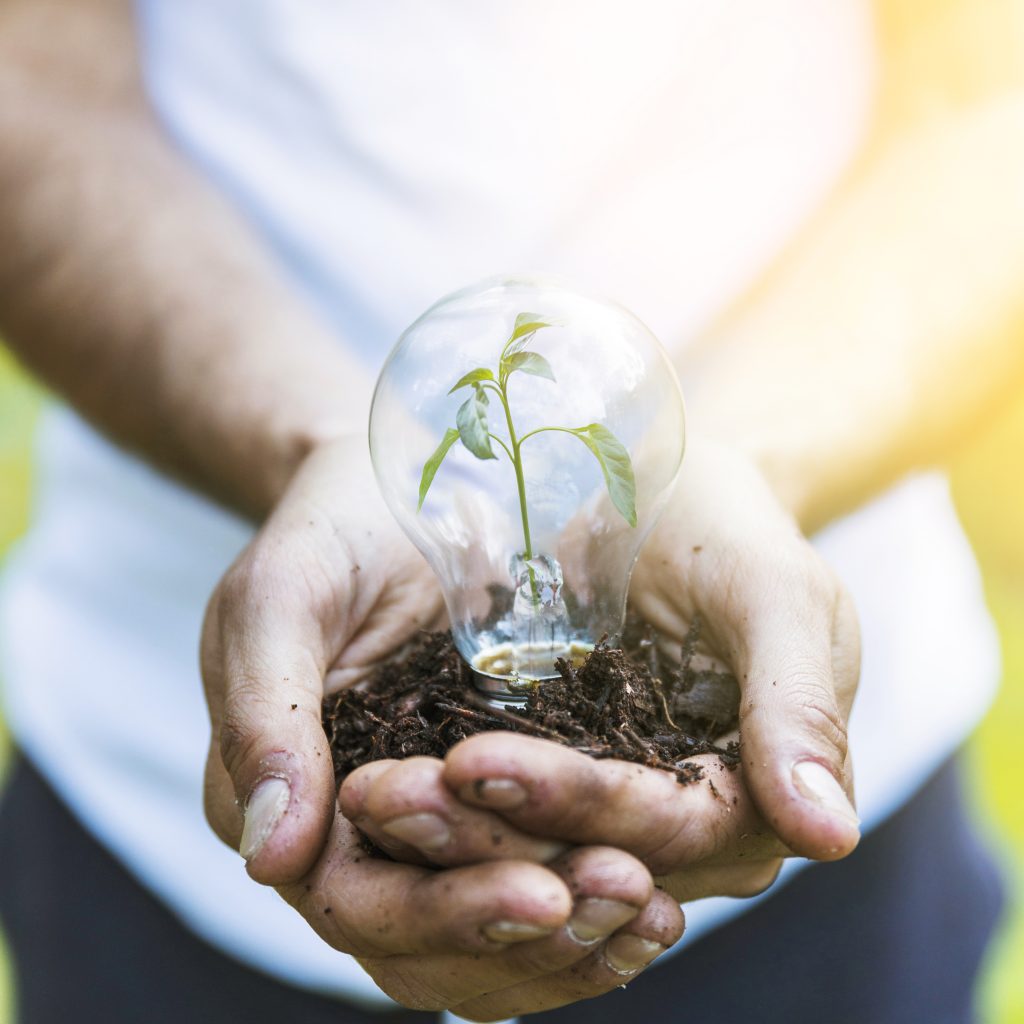
As noted by the father of green chemistry, John Warner, green chemical products should incorporate zero-toxicity, sustainability, cost competitiveness and outstanding product performance. All of these characteristics are indispensable.
On top of years of efforts in green chemistry, Everlight Chemical further launched two major projects in 2022: Blueprint for Evaluation & Development of Sustainable Products and Carbon Footprint Verification and Reduction Pathway Project. The projects aim to help evaluate where the Company stands and devise practical long-term plans to guide us in implementing measures such as combining the use of innovative chemical technologies and advanced production equipment and to drive further success in the near future.
E verlight Chemical’s aspiration is that green chemistry is not just a goal, but can be implemented in the daily operations of the chemical industry.

